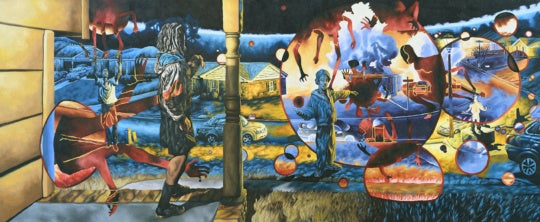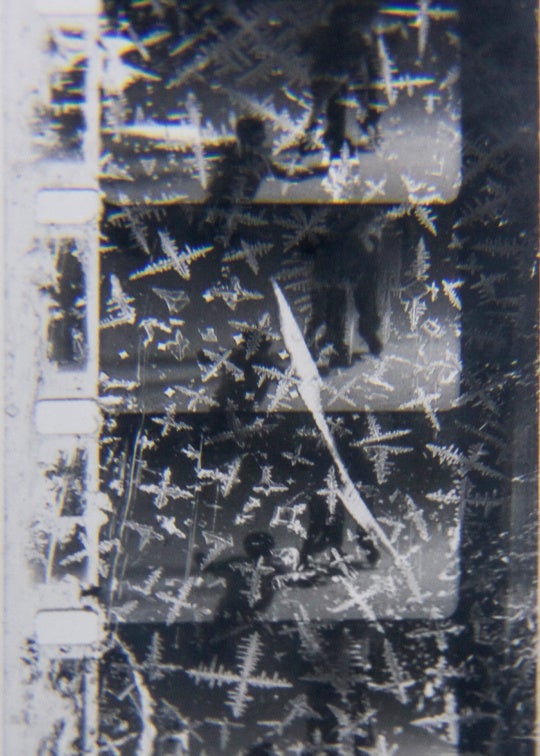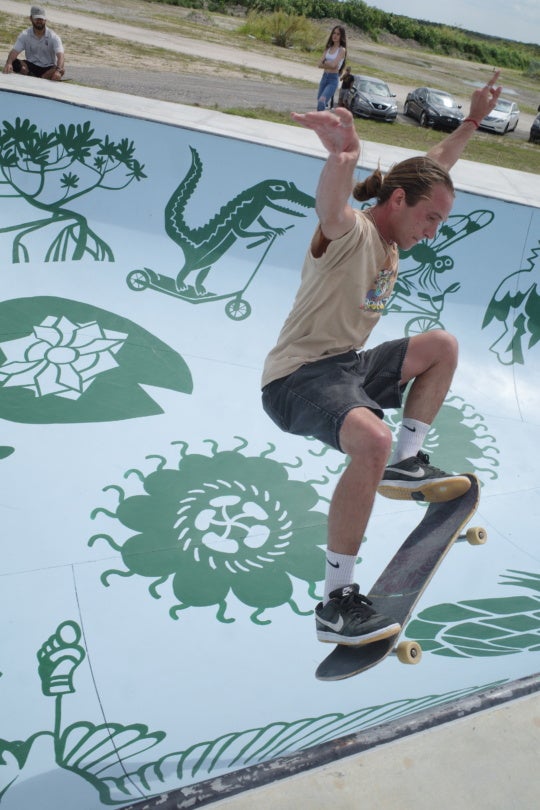
This weekend, the Atlanta Contemporary Art Center celebrates its 40th anniversary as one of the city’s foremost institutions of contemporary works, revealing a major renovation and re-launch of the much heralded Art Party fundraiser.
The event, billed as Nourish, kicks off at 7 p.m. Saturday, October 19, a night replete with stimulation of all senses: two new exhibitions featuring Los Angeles-based collective Fallen Fruit (David Burns and Austin Young), and Energy Strategies by Steven L. Anderson; 14 open studios by the artists in the Studio Artist Program; live music sets from Big Mike’s Kingsized Quartet with the Dames Aflame and DJ Kemit; and craft cocktails and edibles from Octane, The Lawrence, Eclipse di Luna, Yeah! Burger and more.
But don’t let the fanfare fool you:the main star of Saturday’s show is the redesign of the 14,000-square-foot facility, developed by architects Brian Bell and David Yocum of BLDGS. The $600,000 project by the same team that designed Whitespace and Get This! Gallery (formerly Solomon Projects), marks the ACAC’s first facelift in more than two decades. “It was a much needed step in solidifying the center’s future,” says communications manager Rachel Reese. [Disclaimer: Rachel Reese is the former editor of this publication.]
“We received a Nonprofit Toolbox Award from the Community Foundation of Greater Atlanta for strategic planning back in 2010,” Reese says. Part of the award was that a consultant worked with the ACAC staff and board members to establish a pathway for the organization’s growth. The main takeaway: Renovate. So launched the Capital Campaign that would open up walls, simplify lines, install new lights, and replace the vintage ice cubed patterned windows for wide, soaring glass panels. Demolition started in late June, and final aesthetics were being completed as recently as last week.
“The character of the building is still here,” Reese says. “But the interior has been cleaned up.”

Art Party attendees will note a dedicated space for lectures and events, new lobby, reception and bar areas, a cozy resource room that will host casual programming down the line, and the implementation of a simple color scheme—grey and white (say sayonara to the multi-toned exposed ceiling).
The building honors its roots as an industrial space while illustrating the center’s history. One wall will showcase a large scale 40-year timeline highlighting the ACAC’s milestones contextualized with art world events. The renovation of the main building was phase one, which will soon be followed by phase two, the weather-proofing of the outdoor pavilion near the front entrance. Often booked for private events, the pavilion will be updated with a new roof and lighting installations for use year-round.
With such far-reaching changes to the center’s interior, one wonders if the renovation will usher in programming shifts or a reshaping the ACAC’s mission. Artistic director Stuart Horodner is clear—no, it won’t. The building and the center’s efforts are now, simply a better match.
“The building is now architecturally relevant,” Horodner says, adding that people in the know understand what the rigor of the ACAC’s program has been. “We’ve received two major Warhol grants, we have supporters on the local and national level. But our building was never one of those cards to play.”
Their purpose hasn’t really changed, Horodner says. The center was founded in 1973 on a grassroots level by artists. “They were basically trying to solve two things. One, we don’t have enough places to show our work. Two, we have no places to see the kind of work that we want to see because the other venues in town aren’t presenting it.”
In its first few years the ACAC wasn’t yet showing international artists and commissioning work, practices that are now a part of the center’s DNA. But, Horodner says, “the goal to support local artists and also bring things of interest into the city was always the purpose.”

And that balance, of showing Atlanta artists alongside their counterparts elsewhere is a delicate dance Horodner has performed since he joined the center seven years ago. He points out that similar to Art Papers, another Atlanta-based arts institution that will announce new editorial leadership next week, “is probably a closer peer to the Contemporary than almost any number of the other actual presenters in town, because the mission is roughly the same.” More so than MOCA GA—whose focus is purely local, or the High Museum—whose curatorial choices cast a wider net.
“We have similar origins with Art Papers, which came out of the Art Workers Coalition and we shared ideas about community and activism.” One of the founding editors of Art Papers, Julia Fenton actually served as gallery director of the Nexus Contemporary Art Center, the precursor to ACAC. And the two organizations have both received similar criticism, as to whether this balance of showing artists from Atlanta and beyond has been successful.
“There’s probably an audience in Atlanta that thinks we should show more or less of this or that,” Horodner says. “The points of view of the people running the Contemporary and their experiences have ebbed and flowed in slightly different directions,” he says. But adhering to ever-shifting perspectives is not Horodner’s focus. Far more important is what he refers to as “the dialogue.” Not just the local one, either.
“We ask, what does the work do, what does it say, how does it connect the things going on in LA, in New York, Paris, Berlin? My ultimate goal is to feel like I’m in the middle of a conversation that’s happening locally and internationally, and that we’re contributing to it. And I think that’s the goal of artists.”
And the center intends that the show’s opening on Saturday will illustrate that goal. The Fallen Fruit installation includes their own photography, plus works on loan from the Hammonds House, the Wren’s Nest, the Atlanta History Center, alongside wallpaper designed specifically for this show. Anderson’s installation includes prayer rugs, plants and furniture along with tantric-like, hypnotic drawings.
“The work in these shows are not necessarily sales-driven,” Horodner says. “There are pieces people might want to buy but the artists are primarily socially engaged. Their first thoughts aren’t ‘how am I going to sell this?’ but ‘how am I going to work with communities and cross pollinate ideas?’”
Ideas that have legs, Reese hopes. “The Contemporary is solidly placed in Atlanta. I want to now think about placing the ACAC nationally as a great model for showing contemporary art. We want to continue to look outward,” Reese says.
But change, as the saying goes, starts on the inside. The hope is that the new building, and a celebratory event acknowledging the past 40 years will link everything as it should be: mission, action, space.
“Now the building has its own bigness and ambition,” Horodner says, almost with a sense of relief. “It will be nice to put these things together.”




